How Much To Charge For Photo? Photography pricing can be complex, especially when starting your career, but don’t worry; dfphoto.net is here to help you navigate the financial landscape of visual arts. You want to avoid undercharging and losing money while also preventing overcharging and scaring off potential clients. Our guide will help you determine competitive photography rates, covering various factors from experience level to operating costs. Master pricing strategies, explore visual storytelling, and connect with a community that values artistic expression and ethical business practices with us.
1. Photography Pricing for a Thriving Business
Earning a living as a photographer demands dedication, skill, and a proactive attitude. As a photographer, you have multiple avenues to generate income. Besides photoshoots, you can generate income by selling stock photos, prints, affiliate marketing through blogs, vlogs, social media, brand ambassadorships, and magazine submissions.
However, photoshoots are typically the most substantial and reliable income source for photographers. You might choose to specialize in specific areas like weddings, real estate, or product and fashion photography, each offering unique revenue potential.
Establishing the correct photography pricing is crucial for financial success. Let’s delve into the essential aspects of pricing in this article.
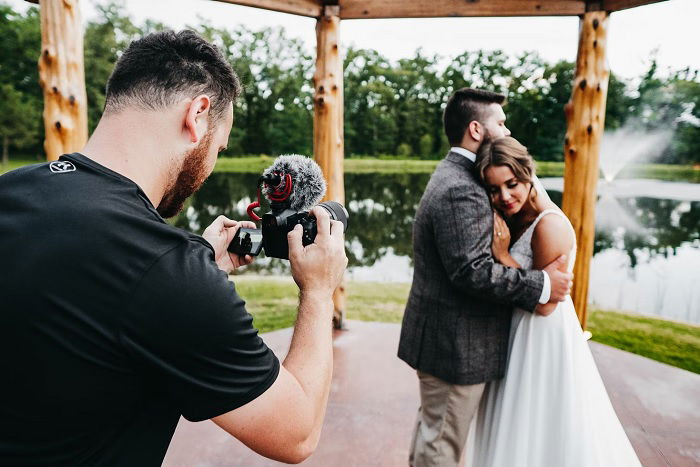 Photographer taking pictures of a wedding couple near a small lake
Photographer taking pictures of a wedding couple near a small lake
It can be tempting for beginners to set low prices to attract clients. However, this could lead to financial losses if you don’t consider your expenses, including your time. You must also avoid overcharging if you are inexperienced.
Pricing photoshoots requires balancing service quality and overhead costs. This strategy ensures profitability and attracts clients willing to pay fair prices for quality images.
2. Photoshoot Pricing Model
Pricing depends on location and photography type. First, estimate the market rate and annual operating costs.
Next, divide costs by the weeks worked to determine weekly earnings for profit.
Then, assume the quantity and value of jobs at the chosen rate. That is a beginning of a photography business plan. Let’s explore this in greater detail.
2.1. How to Estimate the Market Rate
Searching online for photographers in your area reveals many options. Focus on those offering similar services. Each genre has different photography prices, so specificity pays off.
For instance, if you’re in Los Angeles and photograph families, search “Los Angeles family portrait photographers.” Alternatively, seek “local wedding photographers” for wedding photography.
Finding exact photography prices online can be tricky, as many professionals don’t list them on their websites.
Photographers often tailor fees to specific photo services because client needs vary. They rarely hide rates from competitors.
The good news is that many photographers share starting rates, giving you a pricing baseline.
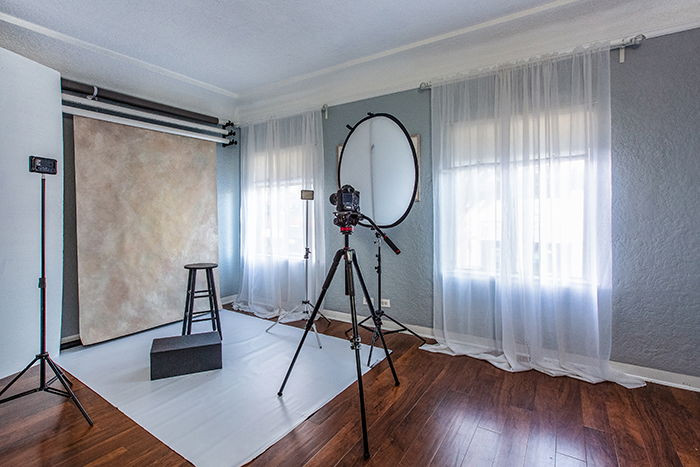 A freelance photographers home studio space
A freelance photographers home studio space
2.2. Experienced Photographers Can Charge More
Field experience greatly impacts rates. One year of experience doesn’t equate to ten.
Professional photographers can charge more than amateur photographers. Earning a living can be difficult if you set student rates.
How much should you charge for photos without experience? Set prices near the lowest rates to attract early customers.
This also expands your photography portfolio to showcase to future clients. As you gain experience, increase rates accordingly.
2.3. Useful Websites to Establish Photography Pricing
What if you don’t get information about local photographers? Try a paid site like Payscale (one free job pricing). Enter “photographer” for local income scales.
Free recruiting sites like Glassdoor and Indeed also provide pricing. Plus, search online for a “photography pricing calculator.” The National Press Photographer’s Association offers a helpful calculator for expenses and desired income.
Fash connects clients and customers and surveyed US photographers about pricing.
They created this hourly rate and price per image model. Use this photography pricing list as a beginner and professional photography pricing guide.
| Level | Per Hour (USD) | Per Image (USD) |
|---|---|---|
| Beginners | 0-50 | 10-25 |
| Amateur | 25-100 | 25-50 |
| Student | 50-100 | 25-100 |
| Semi-pro | 75-150 | 50-150 |
| Professional photographers | 100-300 | 75-350 |
| Top professional photographers | 200-500+ | 400-1,000+ |
3. How to Determine Operating Costs
Matching competitor prices isn’t enough. Consider fixed and variable operating costs:
- Cameras, lenses, and other equipment costs
- Salaries (including your own)
- Monthly rent for your photo studio (or home office if applicable)
- Utilities
- Internet
- Editing software, website, email hosting subscriptions
- Travel expenses
- Advertising costs
- Insurance
- Debt repayments
Besides operating costs, consider time invested in each job, including client communication.
Also, consider location scouting and commuting. Additionally, factor in post-shoot photo editing time.
Finally, factor in taxes when setting photography pricing. The percentage varies by location. Check local and federal tax rates.
For instance, the US has a self-employment tax besides standard income taxes. Set aside 25% to 30% of income for taxes.
Tax varies by business type. Sole proprietors typically pay the highest percentage. Consult a tax specialist for clarification.
Karl Taylor’s example (below) shows weekly earnings needed to cover typical photography business costs. Adjust figures to suit your model.
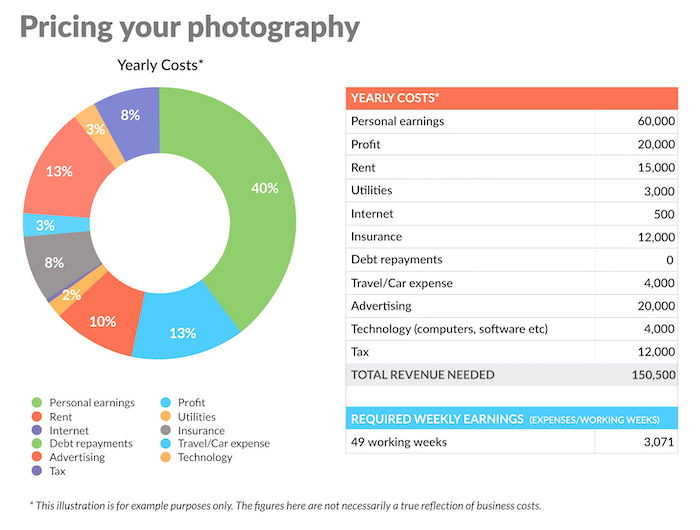 Pie chart of example photography costs and pricing
Pie chart of example photography costs and pricing
4. Structuring Freelance Photography Rates
Pricing varies based on the photography business. Let’s cover event, portrait, real estate, commercial, product, and food photography.
4.1. Photography Rates Per Hour
Hourly photography rates vary greatly among services. High-end photographers charge more than amateurs.
This quick guide shows average hourly price ranges:
- Event Photography: $150 to $500 per hour.
- Wedding Photography: $50 to $250 per hour. Packages: $2,000 to $5,000.
- Portrait Photography: $150 to $350 per hour. Packages: $250 to $1,500.
- Real Estate Photography: Listing rates range between $150 to $500.
- Commercial Photography: Day rates range between $800 to $5,000. Licensing fees range between $250 to $10,000.
- Product Photography: Rates vary between $35 to $175 per image.
- Food Photography: Rates range from $50 to $500 per project.
Consider other variables besides the prices above. Commercial photography includes licensing fees beyond the day rate. Group portrait pricing may differ from individual sessions.
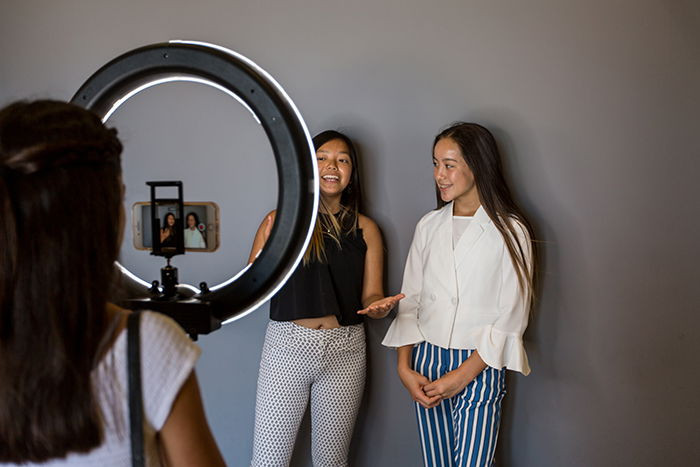 Two female models being photographed in a freelance photographer home studio space
Two female models being photographed in a freelance photographer home studio space
5. How to Price Your Photography in Each Genre
Creating a specific photography pricing template is challenging due to pricing variations.
Let’s break down various photography businesses for a better understanding of each niche’s typical pricing model.
5.1. Event Photography Pricing Guide
Hourly rates are standard for event photographers, ranging from $150 to $500 per hour. Many require minimum session hours.
Clients may pay more if they don’t meet the limit. This prevents photographers from taking $200 jobs and encourages longer sessions.
Charge $300 per hour for less than five hours. A lower rate of $200 per hour may apply for five hours or more.
Hourly rates depend on location and event type. Additionally, fees can be added for special client requests.
The number of images included with hourly rates varies. Some include all best pictures; others limit photos per hour.
Packages may include physical copies of images. Event rates include editing, so ensure hourly rates allow time for it.
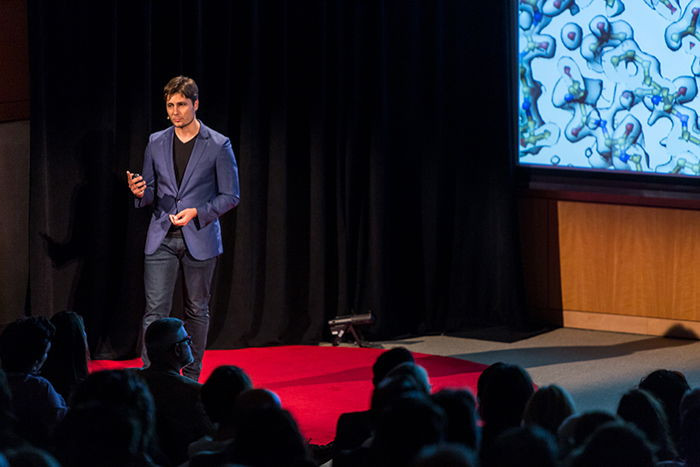 A public speaker onstage talking about how to make money with photography
A public speaker onstage talking about how to make money with photography
5.2. Wedding Photography Pricing Guide
Couples want memorable wedding photos exceeding standard event photos. Special client requests vary.
They may want large prints, a single album, engagement photos, or focus on the wedding. These requests affect wedding photography prices.
Wedding photography contracts often specify event coverage hours and the number of photos provided.
Will you send everything or select the best ones?
Local market and work quality determine rates. Research other photographers’ offerings to set your price structure.
5.2.1. Setting Prices for Wedding Packages
Research other photographers’ packages: inclusions, charges, and competitive service offerings.
Don’t copy; identify wedding photography gaps and fill them with your service for a unique experience.
Pricing packages let you tailor rates to client needs. Photography prices should include albums and prints.
Add a personal touch with physical mementos, increasing earnings.
Also, consider engagement photoshoots. Offer more at a better price to attract clients.
Beginner wedding photographers may price packages as low as $500. Many charge up to $5,000. Renowned professionals can charge as high as $20,000.
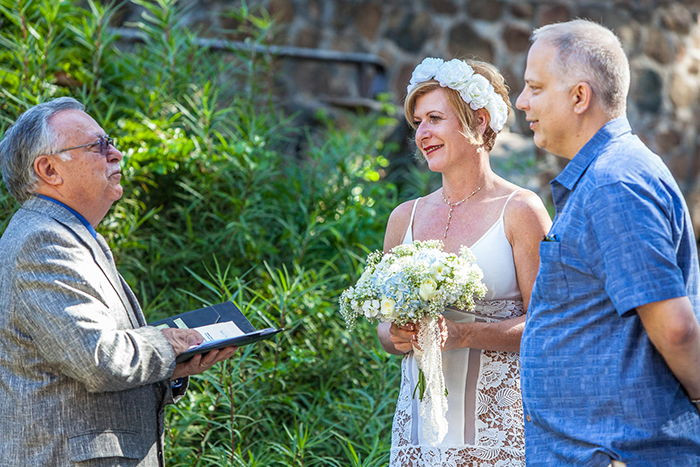 A wedding portrait of a couple being married outdoors
A wedding portrait of a couple being married outdoors
5.3. Portrait Photography Pricing Guide
What factors should you consider when setting portrait photography pricing? Portrait photographers offer packages similar to wedding photographers.
Session length and participant count are important. Time is money, so setting session limits helps you earn more. The longer they pose, the more they pay.
The same applies to group session participant counts. Working with large groups takes longer. Even one blink requires a retake.
5.3.1. Including Extras In the Pricing
Your portrait photography pricing should include a set number of delivered photos. Offer digital images and prints to boost business.
Some like posting images on social media, while others love physical copies. Diversify services and offer different options to earn from digital copies and print albums.
Portrait photography session prices vary. Most professional portrait photographers start at $250 for a basic package with up to three hours and digital files.
Corporate portrait pricing can reach thousands. It depends on the market and skill level. Research rates from other portrait photographers online.
See our complete article on professional portrait photography pricing.
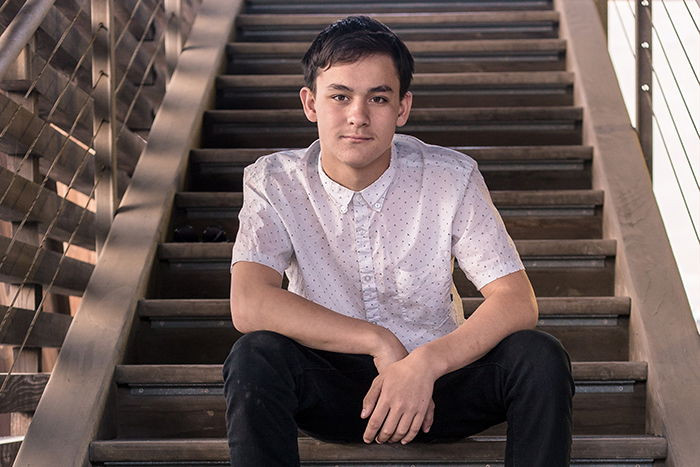 A portrait of a male model on steps of a building
A portrait of a male model on steps of a building
5.3.2. Pricing for Social Media Portraits and Ads
Social media portraits are increasingly popular. If you’re entering this business, how much should you charge for Instagram pictures?
Pricing varies based on business type. Photographers typically send image files, letting clients decide their use.
Clients typically pay for prints and other physical images. People can use digital photos freely without fees.
This pricing model suits most businesses, but social media pricing differs from commercial photography.
Companies using commercial images for marketing must pay for licensing. Social media rates are lower than print ads.
Social media pricing varies greatly, from a few hundred dollars for small company ads to $10,000 or $20,000 for high-profile Instagram campaigns.
 Fashion photo shoot of a beautiful young woman backlit at sunset
Fashion photo shoot of a beautiful young woman backlit at sunset
5.4. Real Estate Photography Pricing Guide
Real estate photography is always in demand and offers opportunities for entry-level photographers. Starting here is easier than in other businesses.
Real estate photography is attractive to beginners because you don’t need a large portfolio to start. It’s easy to learn and doesn’t require much equipment.
Many real estate businesses constantly hire and train new people. Some only require a camera, wide-angle lens, and computer. However, challenges exist.
5.4.1. Flat-Rate Pricing
Unlike other businesses, real estate photography is priced per house listing, not hourly. Clients usually expect 20 to 25 photos.
Property size also determines pricing. Larger houses cost more due to larger areas to photograph.
Photographing every building feature takes more time. You may need to deliver over 30 images to include every room and facility.
Real estate photographers typically start at $125 per listing and can go up to $250+ for larger properties. Flat rates mean that experience level doesn’t matter (mostly).
Clients pay the same to pros as long as you prove skills. However, experienced professionals in higher-priced markets can charge up to $500.
Clients need quality photos reflecting the property’s value if it’s a multi-million dollar home. Brokers prefer experienced photographers over beginners.
5.4.2. Online Platforms and Growing a Business
Online home listing platforms dictate the number of files to deliver. US platforms allow up to 25 photos. Real estate clients need quick turnaround.
Files must be delivered within 24 hours, so account for that in rate calculations.
With many online opportunities, starting in real estate photography is easy. However, building an online portfolio as you gain experience is essential.
Invest in better equipment, including lighting, as you grow. This improves the quality of your real estate photos. If you’re a real estate company employee, you can eventually transition to full-time business owner or contractor.
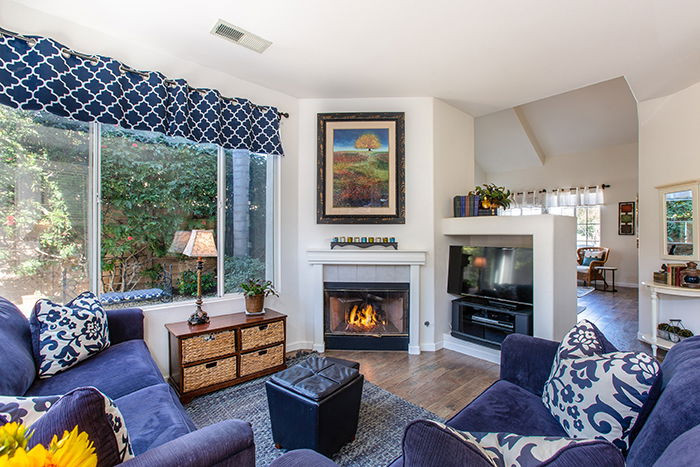 Bright and airy interior photography shot of a living room
Bright and airy interior photography shot of a living room
5.5. Commercial Photography Pricing Guide
Commercial photographers work for companies, not individuals. This niche is challenging, requiring years of training and experience for industry recognition. Once recognized, earnings can be high.
Commercial photographers often earn the highest salaries. Many earn hundreds or thousands of dollars per hour.
They also get paid for licensing photos for commercial use. Licensing can yield tens or hundreds of thousands of dollars. Setting commercial work pricing is tough.
5.5.1. Questions to Ask Beforehand
Many questions must be answered before costs can be determined. Is the project for a small or international brand? Is it for social media or a billboard campaign? What is the budget?
These are factors to consider. Hiring a crew, buying equipment, and production costs are also important.
Pre-production may take weeks or months. The photo session can last from one day to weeks. Post-production requires time and money.
5.5.2. Standard Commercial Pricing
Commercial photography pricing typically uses a day rate, but some charge per hour or project. The fee includes a set number of final images.
Licensing fees are added to the day rate. Photographers retain ownership of the photos even though companies pay top dollar for photoshoots. Clients need permission to use the files for marketing.
Licensing ensures clients can only use photos for a set period, from a few months to years. Clients can stop or extend it for an extra fee when the license expires.
Since commercial projects vary, photographers often don’t set pricing. Small jobs for new photographers may cost as little as $500 per project. A large business can easily charge hundreds of thousands of dollars for a campaign.
 Top of a Coca-Cola bottle
Top of a Coca-Cola bottle
6. Product or E-Commerce Photography Pricing Guide
Product photography, also known as e-commerce photography, is a commercial photography form. It is generally priced per image, ranging from $35 to $170.
Knowing all cost drivers is essential. How long does setup take per product? Is special lighting needed? What post-processing is expected?
6.1. Food Photography Pricing
Food photographers typically charge $150 to $500 or more per job. Work varies greatly, from handheld shots of beef Wellington to comprehensive menu catalogs. There is no “average” job.
Some jobs can be done alone in under an hour. Others require a full day in a studio with an assistant and kitchen staff cooperation.
That makes setting photography prices tricky. You need all the details, including location, shot list, and third-party costs like studio hires and assistants.
You must also agree on the output format (digital images or prints) and expected photo retouching. Pricing should get easier after a few jobs. Think of as many upfront costs as possible.
Research online to find out competitor pricing policies. If you’re in the ballpark, you should get some gigs to build up your food portfolio.
 A coffee table flat lay featuring a baby book and cup of tea
A coffee table flat lay featuring a baby book and cup of tea
7. When to Reevaluate Your Rates
Deciding on photography rates isn’t enough. They should be reevaluated regularly to reflect expertise and work quality.
Review rates and consider price hikes every three months early on. As you gain experience, change rates annually.
Set increases cause issues for many photography businesses. They always add a certain amount without knowing how much they need.
Don’t increase photography pricing arbitrarily. You need a good reason to add $100 to your fees. Know where every penny goes. That shows what to charge.
Calculate costs before setting new photography rates. Then, create a number to sustain income and enable growth.
Also, remain competitive with other businesses. High fees may cause customer loss.
8. Seek Professional Business Advice
How much should photographers charge? Your business knowledge is understandably limited as a freelance photographer.
Consider hiring a financial consultant as you gain clients. They can help you make sound financial decisions.
Paying for it isn’t fun, but you’ll better manage business resources long-term.
Internet research isn’t always enough. Seeing competitor photography rates is often hard. Consider business coaching from professionals.
8.1. Business Coaching
Business coaching is relatively new for photography businesses but is valuable, especially when starting. Start by searching for coaching in your niche, from newborn to portrait photography.
Book a session with a good coaching service. Pay a fee for professional business advice.
This includes setting photography rates. You can also ask about invoicing and other financial matters.
Coaching can be expensive, but it helps you understand how to run a successful photography business. If you need reliable feedback, try it.
8.2. Self-Study and Learning
If you’re entrepreneurial, study the ins and outs of your business. No one knows your business better than you.
Most photographers choose this route. Student photographers take marketing courses with photo courses. However, not everyone runs a business well.
If you’re good at managing money, then this is your opportunity. Manage everything yourself. It may be tiring, but you don’t have to hire a consultant.
Plus, you have total control over your photography business. There’s nothing like seeing your earnings grow through your work. Also, check out our Organic Marketing for Photographers eBook to help your photography business thrive!
 Two men consulting about finances.
Two men consulting about finances.
9. Conclusion: Photography Pricing Guide
Pricing our talents can be challenging as creatives. Our rates must sustain our business and lives as photography business owners. Research it.
Ensure your photography pricing is competitive. Increase them as your reputation grows to develop a successful freelance photography business.
It’s also essential to create an easy-to-understand pricing model. Clients should know payment and benefits.
Do you charge hourly, daily, or per project? Transparency helps people trust you and avoids arguments with angry clients.
Setting photography pricing can be intimidating, but experience helps you understand how it works. Be patient. As you learn more about your business and how much photographers make, everything will get easier.
Do you dream of mastering advanced photography techniques, finding inspiration, and staying updated on the latest equipment? Visit dfphoto.net now to explore tutorials, admire stunning images, and connect with the US photography community. Elevate your skills and ignite your creativity today!
FAQ about Photography Pricing
1. What is the average hourly rate for a photographer in the US?
- The average hourly rate for a photographer in the US ranges from $100 to $300, but it varies depending on experience, location, and type of photography.
2. How much should I charge for a photo shoot as a beginner?
- As a beginner, consider charging between $0 and $50 per hour or $10 to $25 per image to attract clients and build your portfolio.
3. What factors should I consider when setting my photography rates?
- Consider your experience, operating costs, market rates, the type of photography, and the time invested in each project.
4. How do I determine my operating costs as a photographer?
- Include costs such as equipment, salaries, rent, utilities, software subscriptions, travel expenses, advertising, insurance, and taxes.
5. How often should I reevaluate my photography rates?
- Early in your career, reevaluate every three months. As you become more experienced, consider reviewing rates annually.
6. What is a day rate for commercial photography?
- Commercial photography day rates typically range from $800 to $5,000, depending on the complexity of the project and the photographer’s experience.
7. How much should I charge for wedding photography packages?
- Beginner wedding photographers may charge as low as $500, while experienced professionals can range from $2,000 to $5,000 or more for comprehensive packages.
8. What are licensing fees in photography?
- Licensing fees are payments for the right to use a photographer’s images for commercial purposes, allowing photographers to retain ownership while granting usage rights to clients.
9. Should I offer prints and albums in my photography packages?
- Yes, including physical products like prints and albums can add a personal touch and increase your earnings, offering clients a more complete experience.
10. Where can I find more resources on setting photography prices?
- Visit dfphoto.net for tutorials, tips, and community support to help you navigate the financial aspects of photography and set competitive rates.
